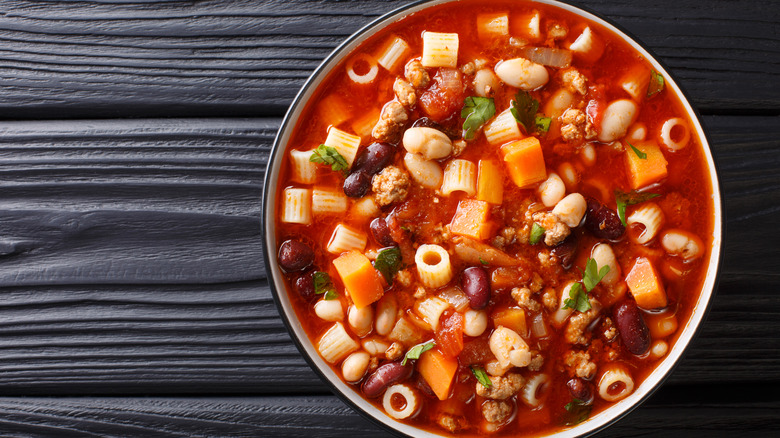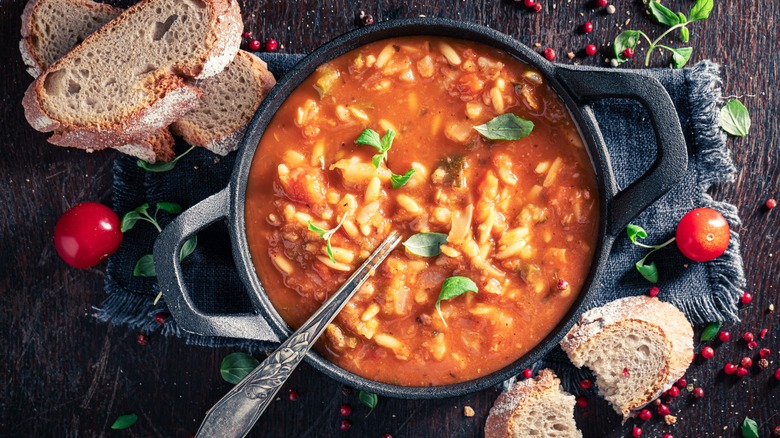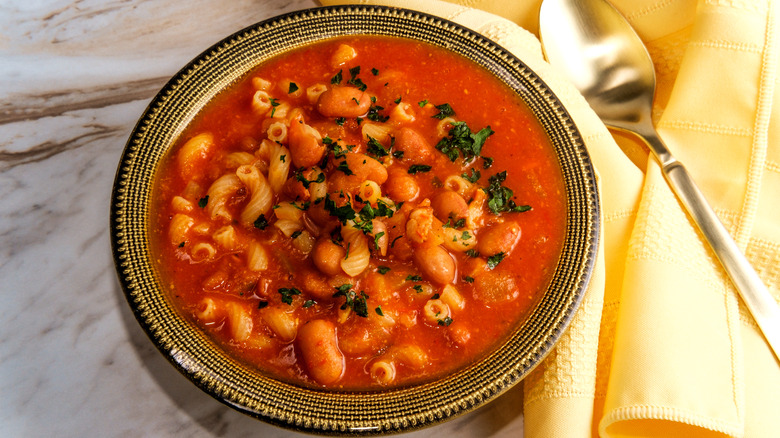The Difference Between Pasta E Fagioli And Minestrone Soup
As two of the most popular soups to come out of Italy, minestrone and pasta e fagioli may look similar, but there are differences when it comes to their ingredients. For example, minestrone mainly consists of a variety of seasonal vegetables, beans, and broth, while pasta e fagioli mirrors the use of beans but also includes small-cut pasta (like ditalini or elbow pasta). Generally speaking, pasta e fagioli is meant to be a hearty soup that relies on pasta and beans to give it its bulk (and those are the only two ingredients needed), while minestrone tends to rely more on a savory broth and vegetables.
Both are two of the oldest known recipes to come out of Italy, each dating back to ancient times, and both have tons of variations and spins on them depending on the region — or even just the family — that is hails from. And each can be served with crusty bread to help sop of these delicious broths,
What is minestrone?
A veggie-forward Italian soup, minestrone — which comes from the Italian word minestra, meaning "soup" — dates back to 2nd century B.C. due to the Romans conquering Italy and bringing tons of new vegetables to the country. According to stories passed down through generations, this was initially called the poor man's soup and would be made up of whatever leftovers a family had available. Traditionally meant to be a vegetarian soup, some modern recipes also include meat, like ground beef, ham, or sausage.
Thanks to minestrone's humble beginnings, it's hard to pin down exactly what ingredients originally were in it (which is why there are so many variations floating around). This is also what makes it an exciting soup, though, because you can add whatever ingredients or seasonings you have on hand. Some ideas include carrots, zucchini, potatoes, celery, tomatoes, and beans. And you can even try Ina Garten's minestrone tip of using pesto to take it up a notch.
What is pasta e fagioli?
Sometimes called pasta fazool in Italian-American households, pasta e fagioli translates directly to "pasta and beans." Long considered a peasant dish due to the use of simple and inexpensive ingredients, this soup dates back to ancient Rome. Today, there are tons of variations of it that sometimes include tomato sauce and seasonal veggies. When it comes to the best legumes to use for this soup, you can include whichever beans you have in your pantry, although cannellini, great Northern, kidney, or borlotti beans are the most traditional. This soup also relies on fresh herbs, like rosemary, parsley, and basil, to flavor the broth. If you're in a pinch, you can use Italian seasoning to get the same effect.
While some people like to cook the pasta directly in the soup, others prefer to boil the pasta in a separate pot and ladle it into a serving bowl before topping it with the soup. This helps to ensure that the pasta doesn't soak up too much of the broth, which results in a thick consistency. The choice is up to you on what you prefer.



